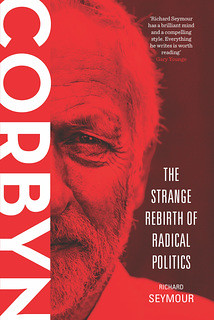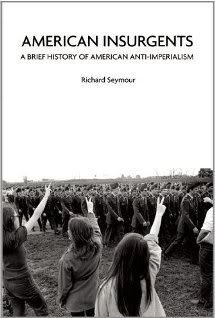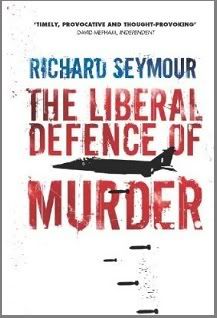Saturday, March 24, 2012
Trayvon Martin and the history of lynching posted by Richard Seymour
Labels: capitalist state, class, kkk, lynching, racial formation, racism, terror, trayvon martin, united states, vigilantism, violence
Friday, April 02, 2010
Class struggle and the invention of race posted by Richard Seymour
"[T]he supply of indentured servants to the Chesapeake had dried up in the years immediately following the disturbance of the 1670s [Bacon's Rebellion]. Even if Virginia farmers and planters had wanted to continue purchasing white servants at that time, the number of indentured migrants was insufficient to meet their needs. The most convincing explanation of the transition from servitude to slavery in the Chesapeake lies in the changing supply and demand situation for servants at this time and the increased availability of African slaves, obtainable in conditions of nearly perfect elasticity of supply ... During the transition from servitude to slavery in the Chesapeake, comparative prices for both forms of labour played their part in determining planters' decisions to purchase unfree workers ... purchasers acted in an economically rational manner."
These arguments usually work in tandem, as even the most economically reductionist account usually emphasises that factors other than the relative costs of the different kinds of labour had to be in operation. They actually emerged in the context of a reaction against more radical accounts of the origins of slavery, pionerred by Oscar and Mary Handlin in the 1950s as part of their contribution to the emerging civil rights movement. The Handlins' thesis was based on the observation that until the 1660s, Africans arriving in the US were not hereditary bondsmen but were indentured labourers much as their European counterparts were. Thus, no pre-existing racial prejudice could account for the differences in treatment that later emerged. Racism was an after-the-fact ruling class strategy to justify segregating and enslaving African American labourers. Thus, there was no 'innate' barrier to African Americans acquiring justice in the United States. Of course, subsequent historical research has done much to render the arguments more complex than they initially presented themselves as being. But, as I think Theodore W Allen's monumental two-volume study The Invention of the White Race demonstrates, the hegemony of the anti-Handlins is not due to their superior marshalling of evidence or theoretical rigour. The institutional power that such accounts have acquired is due to the anathema against work that focuses on such passe notions as 'class struggle' and 'capitalism'.
Here is Barbara Fields' invaluable guide to that labour supply problem, for example:
Ultimately, the only check upon oppression is the strength and effectiveness of resistance to it.
Resistance does not refer only to the fight that individuals, or collections of them, put up at any given time against those trying to impose on them. It refers also to the historical outcome of the struggle that has gone before, perhaps long enough before to have been hallowed by custom or formalized in law—as ‘the rights of an Englishman’, for example. The freedoms of lower-class Englishmen, and the somewhat lesser freedoms of lower-class Englishwomen, were not gifts of the English nobility, tendered out of solicitude for people of their own colour or nationality. Rather, they emerged from centuries of day-today contest, overt and covert, armed and unarmed, peaceable and forcible, over where the limits lay. Moral scruples about what could and what could not be done to the lower classes were nothing but the shoulds and should nots distilled from this collective historical experience, ritualized as rules of behaviour or systematized as common law—but always liable to be put once again on the table for negotiation or into the ring for combat.19 Each new increment of freedom that the lower classes regarded as their due represented the provisional outcome of the last round in a continuing boxing-match and established the fighting weights of the contenders in the next round.
Custom and Law
In the round that took place in early colonial Virginia, servants lost many of the concessions to their dignity, well-being and comfort that their counterparts had won in England. But not all. To have degraded the servants into slaves en masse would have driven the continuing struggle up several notches, a dangerous undertaking considering that servants were well-armed, that they outnumbered their masters, and that the Indians could easily take advantage of the inevitably resulting warfare among the enemy. Moreover, the enslavement of already arrived immigrants, once news of it reached England, would have threatened the sources of future immigration. Even the greediest and most short-sighted profiteer could foresee disaster in any such policy. Given how fast people died in Virginia, the lifetime’s labour of most slaves would probably have amounted to less than a seven-year term of servitude (fifteen thousand immigrants between 1625 and 1640 only increased the population from some thirteen hundred to seven or eight thousand).20 And the prospect of gaining enslaveable children in the future—an uncertain prospect, considering how few women arrived during the boom years21—could not compensate for the certain loss of adult immigrants in the present.
Some of these same considerations argued against employing African descended slaves for life on a large scale; others did not. Needless to say, adverse publicity did not threaten the sources of forced migration as it did those of voluntary migration. Much more important: Africans and Afro-West Indians had not taken part in the long history of negotiation and contest in which the English lower classes had worked out the relationship between themselves and their superiors. Therefore, the custom and law that embodied that history did not apply to them. To put it another way: when English servants entered the ring in Virginia, they did not enter alone. Instead, they entered in company with the generations who had preceded them in the struggle; and the outcome of those earlier struggles established the terms and conditions of the latest one. But Africans and Afro-West Indians did enter the ring alone. Their forebears had struggled in a different arena, which had no bearing on this one. Whatever concessions they might obtain had to be won from scratch, in unequal combat, an ocean away from the people they might have called on for reinforcements. Africans and Afro-West Indians were thus available for perpetual slavery in a way that English servants were not.
The labour supply problem was, therefore, in large measure a story of resistance and ruling class response. It was therefore economically and politically rational that, in the face of the multi-racial Bacon Rebellion (actually, a rebellion that united European and African agrarian workers against Native Americans as much as against their white bosses), Virginia's ruling class backed by the English monarch would start to introduce this cleavage into the labour force. The unity of poor whites and blacks had enabled Bacon's forces to outnumber Governor Berkeley's forces, after all. Though white workers did not necessarily escape forms of slavery, these were never systematised because it was politically unviable to do so. It was far easier for the ruling class to enslave African American workers, to whom the Virginia planters related as part of an imperial ruling elite who had no accumulation of prior struggle with said workers. The dramatic expansion of the African American slave system esp since the 1680s, the introduction of various race laws that poor whites would be deputised to enforce, the transformation of doctrines of the 'Freeborn Englishman' into doctrines of the 'free white man', etc., were all "economically rational" precisely because of the prior accumulation of political - that is to say, class - struggles and their outcomes. The invention of race proved to be a highly durable and effective way of stratifying labour systems in a capitalist mode of production, and the model was subsequently globalised by the most powerful and internationally aggressive capitalist states. The enduring ideological power of those capitalist states is felt in their ability to promote and perpetuate ahistorical narratives that blame some innate human impulse coupled with an almost accidental fluctuation of the labour-supply dynamic for the invention of that system.
Labels: 'race', british capitalism, british empire, capitalism, class struggle, racism, united states, us capitalism
Saturday, December 20, 2008
On the right to food posted by Richard Seymour
In favour: Afghanistan, Albania, Algeria, Andorra, Angola, Antigua and Barbuda, Argentina, Armenia, Australia, Austria, Azerbaijan, Bahamas, Bahrain, Bangladesh, Barbados, Belarus, Belgium, Belize, Benin, Bhutan, Bolivia, Bosnia and Herzegovina, Botswana, Brazil, Brunei Darussalam, Bulgaria, Burkina Faso, Burundi, Cambodia, Cameroon, Canada, Cape Verde, Chad, Chile, China, Colombia, Comoros, Congo, Costa Rica, Côte d’Ivoire, Croatia, Cuba, Cyprus, Czech Republic, Democratic People’s Republic of Korea, Denmark, Djibouti, Dominica, Dominican Republic, Ecuador, Egypt, El Salvador, Equatorial Guinea, Eritrea, Estonia, Ethiopia, Fiji, Finland, France, Gabon, Gambia, Georgia, Germany, Ghana, Greece, Grenada, Guinea, Guinea-Bissau, Guyana, Haiti, Honduras, Hungary, Iceland, India, Indonesia, Iran, Iraq, Ireland, Israel, Italy, Jamaica, Japan, Jordan, Kazakhstan, Kenya, Kuwait, Kyrgyzstan, Lao People’s Democratic Republic, Latvia, Lebanon, Lesotho, Liberia, Libya, Liechtenstein, Lithuania, Luxembourg, Madagascar, Malawi, Malaysia, Maldives, Mali, Malta, Mauritania, Mauritius, Mexico, Micronesia (Federated States of), Monaco, Mongolia, Montenegro, Morocco, Mozambique, Myanmar, Namibia, Nauru, Nepal, Netherlands, New Zealand, Nicaragua, Niger, Nigeria, Norway, Oman, Pakistan, Panama, Papua New Guinea, Paraguay, Peru, Philippines, Poland, Portugal, Qatar, Republic of Korea, Republic of Moldova, Romania, Russian Federation, Rwanda, Saint Lucia, Saint Vincent and the Grenadines, Samoa, San Marino, Saudi Arabia, Senegal, Serbia, Sierra Leone, Singapore, Slovakia, Slovenia, Solomon Islands, South Africa, Spain, Sri Lanka, Sudan, Suriname, Swaziland, Sweden, Switzerland, Syria, Tajikistan, Thailand, the former Yugoslav Republic of Macedonia, Timor-Leste, Togo, Tonga, Trinidad and Tobago, Tunisia, Turkey, Turkmenistan, Uganda, Ukraine, United Arab Emirates, United Kingdom, United Republic of Tanzania, Uruguay, Uzbekistan, Vanuatu, Venezuela, Viet Nam, Yemen, Zambia, Zimbabwe.Against: United States.
Labels: capitalism, human rights, starvation, UN, united states










